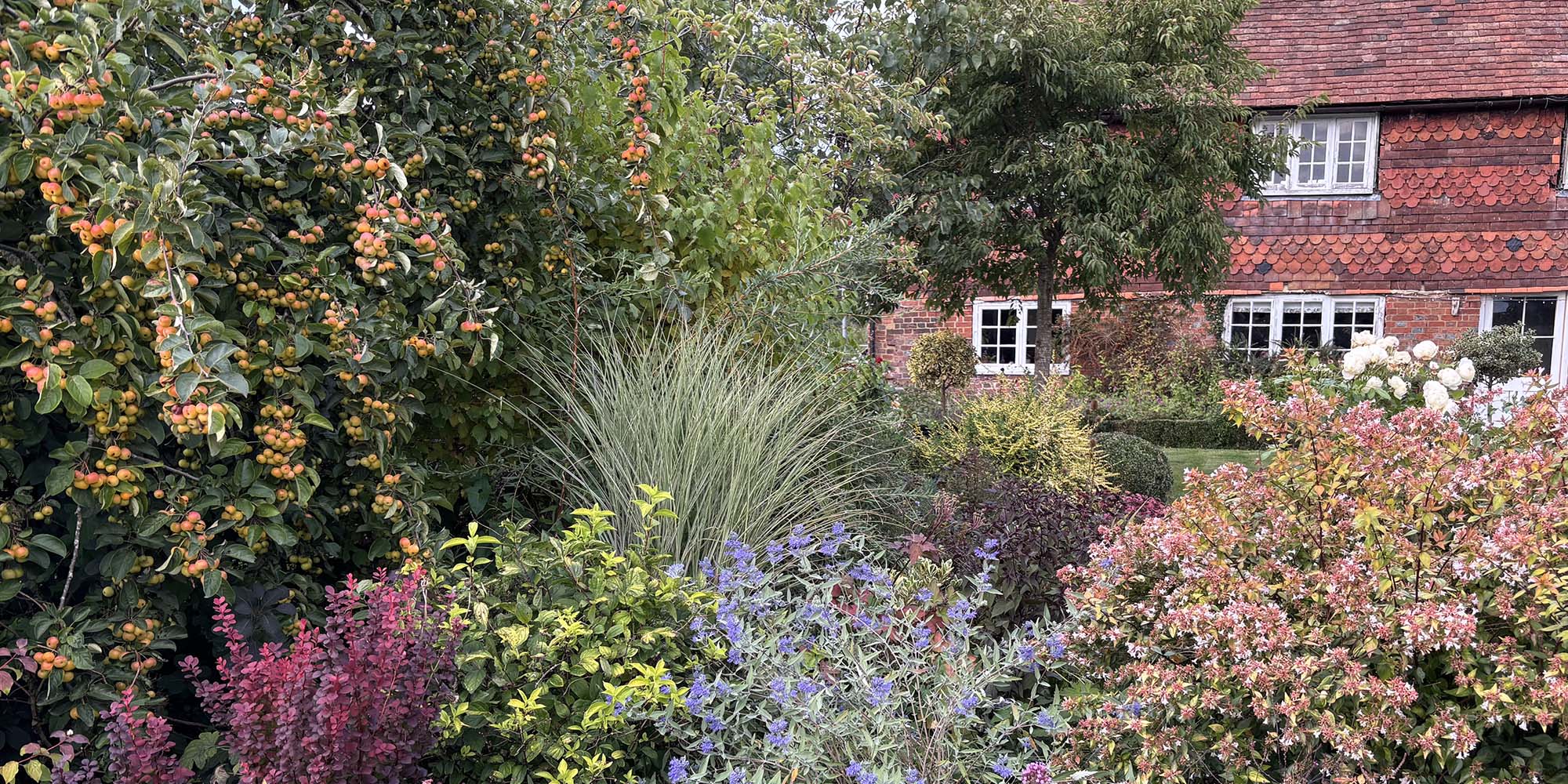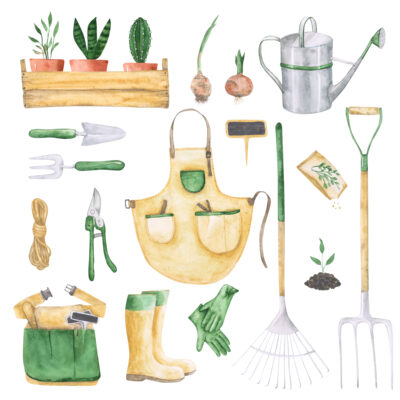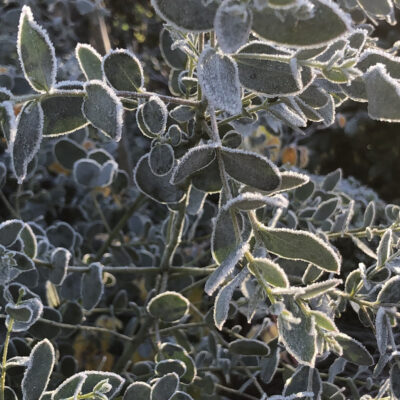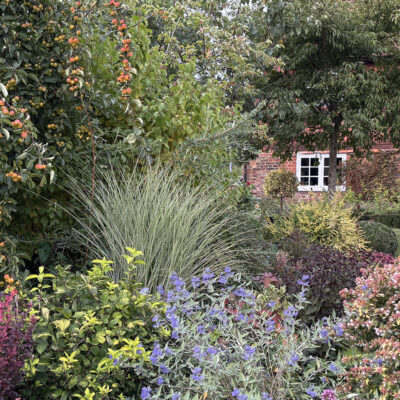Jo Arnell pays attention to some often-overlooked garden stalwarts
Shrubs are back. I’m not sure that they ever went away to be honest, but drifts of perennials and meadow plants have been stealing the limelight in recent years. Perhaps it’s because they’re more photogenic, floriferous and beguiling, easy to move around and cheaper to buy. Annuals and perennials are quickly swamped in floods, blown over by gales and scorched in harsh sun; shrubs are more able to resist, have deeper roots and more staying power. Climate change is making us rethink what to grow, how we grow and how we can help our gardens through the tough times.
Resilient and long lasting
You might raise an eyebrow at this, but some of the hardiest, most tenacious shrubs are to be found in workaday places – supermarket car parks, on verges and roundabouts. They aren’t the most elegant and beautiful, not helped by a certain style of pruning – the horticultural equivalent of a short back and sides – but they put up with so much (insensitive pruning included). They are trampled, reversed into, subject to pollution, exhaust fumes, lack of water and fertiliser and given just a hard mulch of bark that scatters into the roads.
But they survive. In fact some of them seem to positively thrive, a little tatty around the edges maybe, but in general doing well. It is worth looking at these workhorses, because, given some care and TLC they will respond and will show their natural elegance and beauty. Top of the list here would be Elaeagnus – tough as old boots, plant it anywhere, it does grow big, but prune as hard as you like (preferably in spring), because its almost invisible flowers have amazing scent in the autumn. Next is another evergreen, in fact a couple, and with the same first name – Osmanthus burkwoodii and Osmanthus heterophyllus ‘Goshiki’. O. burkwoodii has small dark evergreen leaves, a little like those of box, (but unlike box not subject to blight or attack from caterpillars) and it has tiny scented flowers in early spring. Its cousin ‘Goshiki’ is usually mistaken for holly, as the marbled leaves are almost the same size and shape and its common name is the holly olive, just to confuse things more, but this quiet holly-copy from Japan will grow slowly and neatly into a domed shrub with an eventual height of about 1.2 metres. Physocarpus opulifolius (try ‘Diabolo’, ‘Amber Jubilee’ or ‘Little Devil’) has dark red/brown coloured leaves and is tolerant of sun, wind and clay soil. Mature plants have decorative peeling bark in winter too.
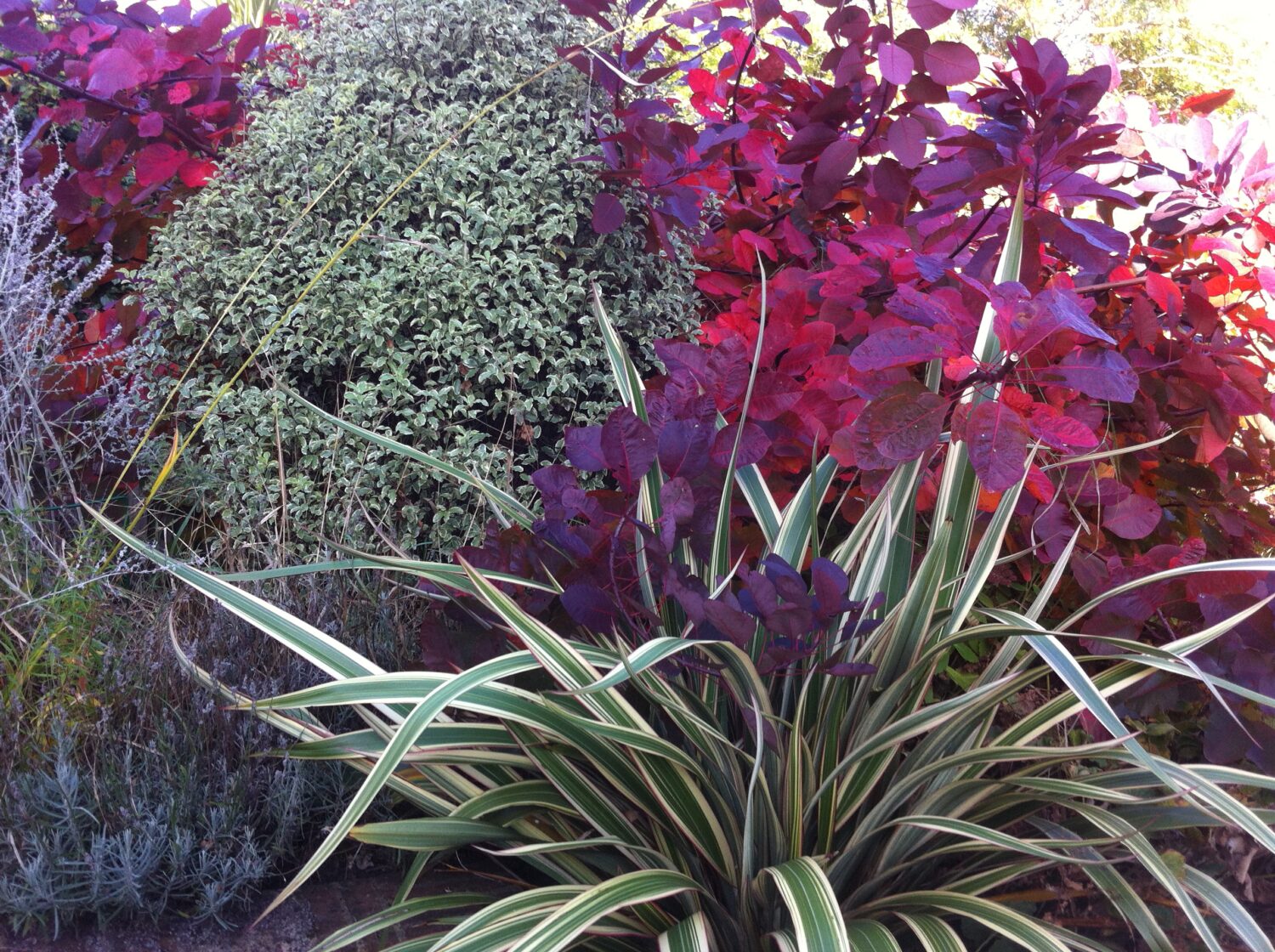
Shrubs for difficult areas
There are plenty of shrubs that will be happy in the most challenging spots in our gardens – an area of dry shade, perhaps under a big tree, in the lee of a conifer hedge, or at the base of a wall in the damp and gloom. Exposed and excessively sunny dry borders can be really tricky too.
When you are out shopping for your next victim for the space, do a little research into the types of plants that might work – before you buy them. It helps if you know where they originate from, as matching them to something approximating their natural habitat will go a long way to making them feel at home (is there somewhere in your garden that’s the equivalent of a wooded valley at the foot of the Himalayas? A hot Turkish hillside?).
Plants that tolerate dry shade have tough leathery leaves to prevent loss of water and are probably dark green and shiny too – packed with chlorophyll to make the most of the small amount of available light. Mahonia aquifolium is another plant with holly-like leaves, ideally adapted to dry conditions with the bonus of cheerful yellow flowers that shine out of the gloom in late winter. One of my favourites is Euonymus fortunei ‘Emerald Gaiety’, a small, spreading (but not marauding) variegated evergreen. It is a common plant, but so useful in tricky places. It will grow anywhere, but do not plant it in a container, at least not for long, as it can be attacked by Vine weevil. This evil weevil is only active at night, furtively nibbling notches in the leaves, but it is the larvae that do the most damage, as they stay in the compost and eat the roots of the plant. Sarcococca confusa is another smallish evergreen, it is nicknamed the ‘Christmas box’, because it has small, dark green leaves like a box plant and flowers in winter – and this small plant really pumps out the perfume – detectable from several metres away.
Fatsia japonica is a beautiful shrub that looks distinctly tropical with its large, glossy palmate leaves. It is often grown as a houseplant, but is surprisingly garden friendly and will grow in the driest of dry shade, providing a contrast of shape and form among smaller leaved plants.
Leaves that are silvery grey, downy, or wiry – like lavender or lambs ears (Stachys byzantina) have adapted to very hot dry conditions, some have even grown their own sunscreen in the form of a powdery or waxy coating. The Mediterranean shrubs – Cistus, Rosemary, Artemisia and Santolina have had a very good summer this year, revelling in the endless sunshine, while some of their garden companions have been gasping for water and are frazzled to sticks. If it suddenly goes wet though – and we do have very wet winters sometimes – they will struggle, and it is the wet that kills them more than the cold. Try planting the sun lovers in raised beds or on top of small mounds, so that the winter wet can drain away. Shape and structure
Shrubs are the backbone of the garden, providing focal points, creating anchors and rhythm in borders, or hanging back as support characters and quiet contrasts to showier plants. Clipped evergreens and topiary will lend formality to a scheme, but cohesion is also needed in more relaxed plantings too and shrubs like Pittosporums, whether that’s the almost tree-like form of Pittosporum garnettii or the very appealing, but unattractively named ‘Wrinkled Blue’ – so called because the edges of its green-blue leaves are wavy – or the neat domes of smaller cultivars like ‘Golf Ball’, ‘Silver Ball’ or ‘Tom Thumb’. These will provide useful punctuation and a gentle structure.
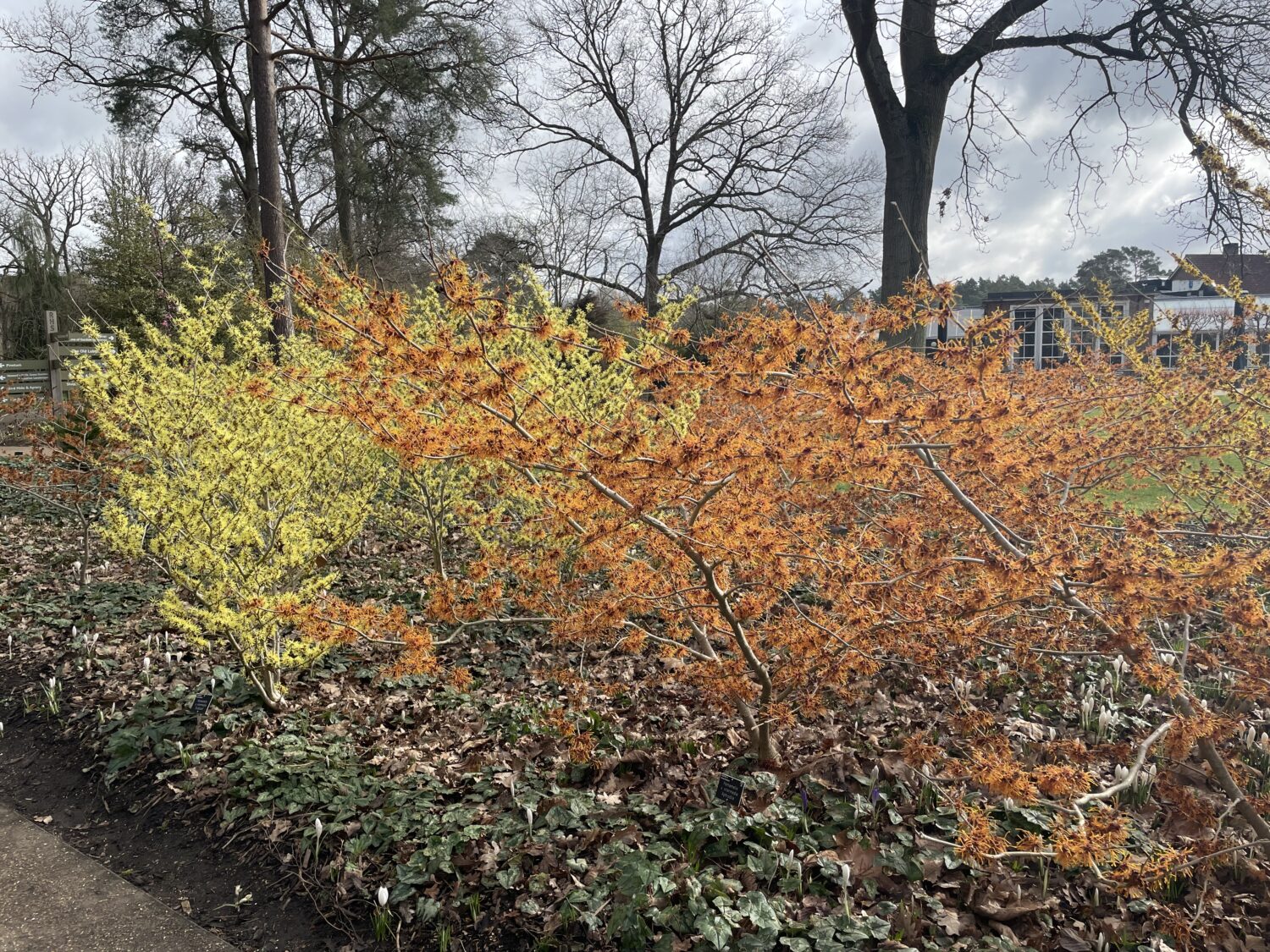
If you want to add in some height and elegance there are several large shrubs that will elevate the borders – many of the evergreens are pudding shaped and an upright and/or arching shape will contrast and lighten. Look for those that have a natural elegance and year round interest. Cornus kousa is an excellent choice for a sheltered, semi-shaded site – it has beautiful long lasting bracts in spring, ornamental fruits in summer, then colourful autumn foliage and although these will drop in winter, the bare stems make an attractive feature too. Witch hazels are fabulous early in the new year with their spicily scented spidery blossoms, elegant form and large leaves. I have recently fallen for a small deciduous Euonymus – E. alatus compactus, that goes unnoticed for much of the year, despite its pleasingly neat fountain shape, but comes into its own in early autumn when its leaves blaze scarlet.
For flowers – and more
Look for flowering shrubs that have something else to offer after the flowers have fallen – it could be fruits, berries, autumn leaves or a good overall shape. Interview candidates for their position in the border – do they get on well with the other plants? How much space will they need? What will they do for the border in five years’ time? We cannot live by flowers alone – unless they are truly spectacular…
Sambucus nigra ‘Black lace’ is a large impressive version of our native elder. It has striking black foliage, pale pink elderflowers and then black elderberries. Beware, this shrub grows fast, but is easy to prune and keep in check. Viburnum plicatum f. tomentosum ‘Mariesii’ has lovely tiered branches in horizontal layers, pretty flowers in May/June and then burgundy autumn colour. Hydrangea paniculata ‘Limelight’ is more tolerant than some Hydtrangeas of dry conditions, although it would prefer damp soil. The bracts last for a long time, opening white, fading to pale lime green and then tinged with antique pink.
Whatever you choose, the key to long-lasting success is to establish them well. Autumn is the perfect time for planting, they’ll have time to grow strong roots before the pressure is on to perform in spring and summer. Keep an eye on them for at least two years after planting and water well whenever the weather becomes dry. Once established though, most shrubs should not need regular watering – in fact it won’t help them to develop deep roots – a healthy rhizosphere (the area around the roots) and useful associations with beneficial mycorrhizae and bacteria that will enable them to cope with periods of drought in the coming years. Shrubs are here for the long term and, well chosen and carefully planted, will live long and prosper.
Jo’s new gardening courses are now booking 07923 969634 hornbrookmanor.co.uk
You may also like
Just one pruning thing
Jo Arnell tackles the complexities of this often dreaded garden task Pruning can seem daunting – and sometimes like one of the dark arts – every plant seems to need a different approach at some other time of the year....
In the bleak midwinter
Jo Arnell explains how to brave the dark and chilly winter blues with a little help from your garden Winter can be hard for some of us and Seasonal Affective Disorder (SAD) is a real thing, linked to the lack...
Let’s go local
Jo Arnell gives her recommendations for plants that thrive naturally in the great British climate Our native plants are tough. Able to survive frosts, wet winters and – once established – short periods of drought too. They are the bedrock,...
